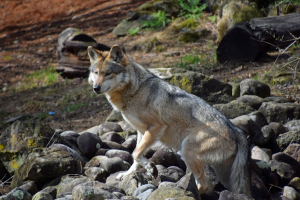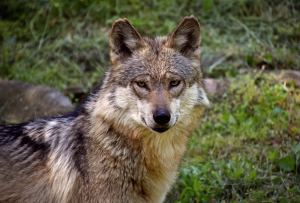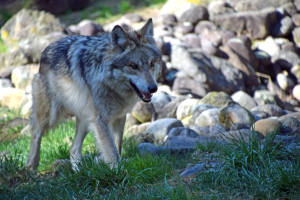

Wolf Awareness Week: Meet the Pack!
Since 1996 the third week of October has been designated as Wolf Awareness Week and celebrated as a national event. So how and why exactly was this event created? About a century ago the wolf population was flourishing. Then in the 1900s, largely due to hunting, populations were reduced by hundreds of thousands. In response, gray wolves became protected by the Endangered Species Act in 1974. Later, National Wolf Awareness Week was established to recognize the important role wolves play in their environments and highlight the threats to their survival. Due to strong conservation efforts, wolf populations are making a comeback in many of their natural habitats. Despite that, we still use Wolf Awareness Week as an opportunity to educate people on the importance of wolves and their conservation.
 In the 1900s the Mexican Gray wolf was nearly extinct due to extensive trapping and poisoning. In 1998 U.S. Fish and Wildlife Services released 11 wolves into the Blue Range Wolf Recovery Area. Since then, the gray wolf population in their natural habitat has grown slowly to about 241 in 2022.
In the 1900s the Mexican Gray wolf was nearly extinct due to extensive trapping and poisoning. In 1998 U.S. Fish and Wildlife Services released 11 wolves into the Blue Range Wolf Recovery Area. Since then, the gray wolf population in their natural habitat has grown slowly to about 241 in 2022.
 Next is Mollete and his two sons Stratus and Garza. They came from the Endangered Wolf Center in Missouri and were chosen to make up Maggie’s pack. Mollete can usually be found hanging around Maggie. His two sons Stratus and Garza can be distinguished by Stratus’s larger size and darker face while Garza looks a lot like Maggie. Stratus and Garza are both three years old and were born in the Endangered Wolf Center. Stratus is very independent and likes to do his own thing. He enjoys frolicking through the grasses to search for tasty food. Much like his Dad Mollette, Garza is often found near Maggie. He also has a more “go with the flow” attitude. Our wolves are part of a Species Survival Plan that can help increase populations of Gray Wolves both in zoos and their natural habitat.
Next is Mollete and his two sons Stratus and Garza. They came from the Endangered Wolf Center in Missouri and were chosen to make up Maggie’s pack. Mollete can usually be found hanging around Maggie. His two sons Stratus and Garza can be distinguished by Stratus’s larger size and darker face while Garza looks a lot like Maggie. Stratus and Garza are both three years old and were born in the Endangered Wolf Center. Stratus is very independent and likes to do his own thing. He enjoys frolicking through the grasses to search for tasty food. Much like his Dad Mollette, Garza is often found near Maggie. He also has a more “go with the flow” attitude. Our wolves are part of a Species Survival Plan that can help increase populations of Gray Wolves both in zoos and their natural habitat.
 Stratus and Garza are both three years old and were born in the Endangered Wolf Center. Stratus is very independent and likes to do his own thing. He enjoys frolicking through the grasses to search for tasty food. Much like his Dad Mollette, Garza is often found near Maggie. He also has a more “go with the flow” attitude. Our wolves are part of a Species Survival Plan that can help increase populations of Gray Wolves both in zoos and their natural habitat.
Stratus and Garza are both three years old and were born in the Endangered Wolf Center. Stratus is very independent and likes to do his own thing. He enjoys frolicking through the grasses to search for tasty food. Much like his Dad Mollette, Garza is often found near Maggie. He also has a more “go with the flow” attitude. Our wolves are part of a Species Survival Plan that can help increase populations of Gray Wolves both in zoos and their natural habitat.
Written by Cassidy Amerman
Education Specialist
Lehigh Valley Zoo | Schnecksville, PA